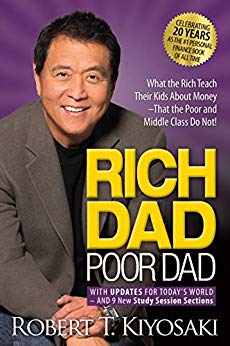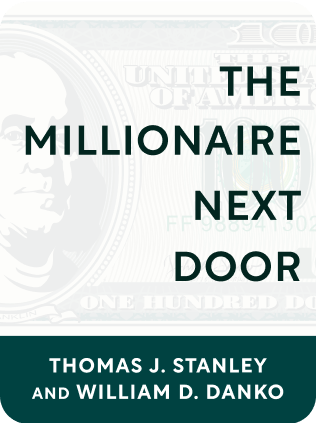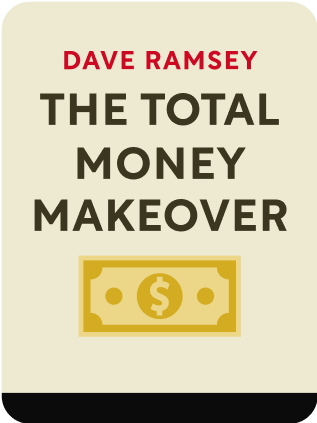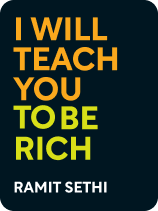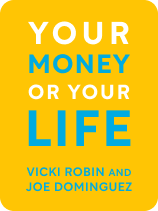

This article gives you a glimpse of what you can learn with Shortform. Shortform has the world’s best guides to 1000+ nonfiction books, plus other resources to help you accelerate your learning.
Want to learn faster and get smarter? Sign up for a free trial here .
Do you want to know how to become successful and rich? What’s the key to a wealthy mindset?
Many people dream of becoming financially successful, and with hard work, this dream is attainable. With the guidance of many authors’ books on making money, you can start seeing more revenue in your wallet.
Let’s look at how to become successful and rich with the help of financial experts.
1. Have a Rich Mindset
The first step in becoming successful and rich is to have the right mindset. Doubting yourself or your financial state won’t help you make more money. In fact, it might actually help you make less money. With Robert T. Kiyosaki’s help in Rich Dad Poor Dad, you can obtain the right mindset to get out of your own way.
Kiyosaki says that happiness and being content with your current financial situation is a good start. More people have the potential to be happy, but common obstacles get in the way. People who overcome these obstacles get a huge advantage. The most common obstacles to a rich mindset are:
Avoid Self-Doubt
Self-doubt or lack of self-confidence holds all of us back, to some degree. Some are affected more than others.
In the real world, more than just intelligence and grades are required. Guts, chutzpah, balls, daring, tenacity, and grit are different names for the factor that plays a huge role in success.
When you recognize a great opportunity, you must have the courage to chase it.
Fear of Loss or Failure
Fear of losing makes you play it safe and avoid opportunities that can have huge upsides and relatively low downsides. Control your fear of losing, money or otherwise. Many people have a fear of losing money, but you have to handle it properly.
School teaches us that mistakes are bad, but this is terrible for real life. Winners aren’t afraid of losing, but losers are. People who avoid failure also avoid success.
Every rich person has lost money. Someone who has never lost money is probably not rich.
Winning requires being unafraid to lose.
Failure will only make you stronger and smarter. Take a loss and make it a win. Use your failure to inspire yourself to become a winner. For winners, losing inspires them. For losers, losing defeats them. Use this sentiment to lower the perceived cost of failing.
Fear of Risk
Don’t be afraid of turbulence or risk. “I’d like to, but I’m due for promotion in three months” is the classic excuse. There is always another carrot dangled ahead of you, so there’s always a good reason not to do what you really want to do.
Fear of Rejection
Don’t be afraid of rejection. Fear of ostracism prevents people from having nonconsensus opinions. As it relates to finance, it’s in 1) not bucking the consensus traditional way of handling your career and money, 2) keeping up with the Joneses and matching spending. Focus on yourself and your personal goals, regardless of what other people think.
If you fear all of these things, you can still be rich. But it requires a wiser, more conservative path: start young, save money, and use compound wealth to become rich when you’re old.
Cynicism
There will always be at least one reason something won’t work. Fixating on these reasons pessimistically will paralyze you from taking any productive step.
Common meaningless rebuttals:
- What if things don’t go as planned?
- What makes you think you can do that?
- If it’s such a good idea, how come someone else hasn’t done it?
- That will never work.
Use your analysis to find opportunities that critics are blind to. Remember, other people are blind to opportunities because they seek security and safety.
Laziness
Some people feel developing financial intelligence is too much hassle. Consider, would you rather put in some hard work now and enjoy decades of a better life, or suffer through the rest of your life?
Counterintuitively, busy people are often the laziest. They stay busy as a way of avoiding something they don’t want to face.
Consider someone who works all day and weekends to make ends meet, without confronting bigger problems like how to build wealth or their family’s well-being. They can brush off investment opportunities as, “I’m working hard enough as it is, and my boss wants me to do more work. I don’t have the time.” In reality, they don’t want to push themselves to do the harder thing of figuring out novel, less-obvious solutions to getting more money.
Forcing yourself to think about how to make more money is like exercising at the gym. The more you work your mental money muscles out, the stronger you get.
Corollary: Find areas that people don’t work in, and there are likely unclaimed opportunities there.
- People often don’t want to invest in real estate because they don’t want to fix toilets. Their loss is your gain. And in reality, you can hire a property manager to handle the physical work.
Be Happy With Enough
How much money should you have? In The Psychology of Money, Morgan Housel never gives an exact number—but, he warns, wanting more than necessary can drive you to lose not just all your money, but also intangible, irreplaceable things like your freedom. That’s why he thinks that learning to be happy with enough is critical to financial success.
Housel explains that some people are never satisfied: No matter how much money they make, they still want more. This endless pursuit of more can often drive them to risk their existing wealth for the wealth they don’t have and don’t even need—and to do so in both legal and illegal ways.
But when you learn to be happy with enough money—whatever that amount is for you— you don’t take unnecessary risks with the money you’ve already accumulated.
How to Be Happy With Enough
So how can you learn to be happy with enough? Housel suggests a few ways:
#1: Stop increasing your lifestyle standards.
If you keep wanting an increasingly lavish lifestyle, you’ll never be satisfied. Not only will you then take dangerous risks to achieve satisfaction, but you’ll also grow envious of others who live whatever way you want at the time, which will diminish your enjoyment of life. Therefore, Housel states, it’s critical that, once you reach the lifestyle you want, you can be happy at that lifestyle—not the one that’s slightly more prestigious.
#2: Accept that somebody will always have more money than you.
If you’re always comparing yourself to somebody richer, you’ll never be satisfied. Unless you’re the richest person in the world, someone always has more money than you do.
#3: Know your values.
When you know your values, you realize that some things are more important than money. Therefore, you don’t risk losing those important things (like your time or freedom) to get less important things (like more money). In this way, knowing your values prevents you from taking dangerous risks with your finances.
Even Millionaires Don’t Have Lavish Lifestyles
Not all millionaires live lavish lifestyles. In fact, The Millionaire Next Door by Thomas J. Stanley claims that millionaires believe financial independence is more important than displaying social status. Consequently, millionaires don’t drive high-status vehicles. They often buy quality vehicles that are several years old, and they never lease or finance them because new cars are overpriced.
It just goes to show that buying nice things doesn’t automatically make you successful and rich. Patience and smart decisions are the keys to building wealth over time.
2. Consider a Career in Demand Among the Wealthy
While they’re frugal in lifestyle, millionaires spend considerable money on things important to them. This creates opportunities for others to make money by catering to those needs. The wealthy need quality advice and services—for instance, accounting, tax advice, legal services, medical and dental care, education, and home services.
If you’re in a business or profession in demand among the wealthy, you can boost your income by targeting wealthy clients. The opportunities are increasing as the number of millionaires continues to grow.
Businesses owned by the millionaires surveyed for this book included: building materials manufacturer, prefab housing, auto parts, auctioneer/appraiser, apparel manufacturer, janitorial services contractor, human resources consultant, real estate developer, beer distributor, construction equipment dealer, and restaurant chain owner.
These types of businesses aren’t typically associated with high-status or lavish lifestyles. They don’t interest under-accumulators, whose primary needs are consumption and showing off their status. However, they meet the self-employed millionaire’s needs to create wealth and become financially independent.
The Millionaire Next Door
by Thomas J. Stanley and William D. Danko
22 min reading time
119.6k reads
audio version available
3. Budget and Don’t Overspend
Dave Ramsey’s The Total Money Makeover advises starting a budget, specifically to create an emergency fund. A budget is a good way to make sure you’re financially comfortable enough to have a rainy day fund. Everyone needs a rainy day fund because it’s guaranteed to rain—there’s always a financial emergency—at some point.
In a typical 10-year period, according to Money magazine, 78% of people will have a major financial challenge, such as a layoff or firing, an unexpected pregnancy, or illness. Things happen and you need to be ready with an emergency fund.
Saving $1,000—fast—is the first step in the Total Money Makeover because, without a financial cushion for emergencies, an unexpected expense is likely to derail the program. If you respond to a financial emergency by turning to debt after starting a money makeover, it will be like breaking a diet and you’ll feel like a failure.
Besides keeping your reform efforts on track, having an emergency fund is a hedge against Murphy’s law—trouble seems to dog anyone without a safety net. Granted, $1,000 won’t get you through a life-altering crisis, but it’s enough to keep smaller crises from triggering debt.
Many people think you should have a credit card for emergencies, but it’s better to plan and save for emergencies than to borrow when they happen, which puts you at even greater risk. The Total Money Makeover is about breaking the cycle of dependence and eliminating credit.
What an Emergency Fund Is For
An emergency fund is for emergencies only—for instance, a medical problem or an expensive repair for a car that you need for work. It’s not for things you suddenly want, like a couch on sale or a weekend trip.
Christmas isn’t a financial emergency, although many people treat it that way. It’s a yearly event that you can save and budget for. The same is true of your kids outgrowing their clothes—it’s expected and you need to plan for it. These kinds of things feel like emergencies only when you haven’t planned for them.
How to Save $1,000
Do whatever you can to round up $1,000: cut your spending, work extra hours, or sell something (have a yard sale, for instance). Most people can find the money in less than a month, but if you can’t, sell more stuff or take on an extra job.
When you get $1,000, stash it where it’s accessible in an emergency but not so easy to grab that you’ll be tempted to spend it for non-emergencies. If you put it in a savings account, don’t attach that account to your checking account as overdraft protection—or you’ll spend it on impulse buys. (One woman framed 10 hundred-dollar bills and hung the “picture” out of sight in a coat closet.)
On the other hand, don’t put it where you’ll be reluctant to tap into it during an emergency, for instance in a CD with a penalty for early withdrawal. This might tempt you to borrow for the emergency instead. When your emergency fund is fully funded (baby step #3), a money market fund is the best place for it—Chapter 8 explains this in more detail.
If you need to use your emergency fund during the Total Money Makeover, pause the program, regardless of the step you’re on, go back to step 1, and replenish the emergency fund.
Along with monthly budgeting, creating an emergency fund may be your first experience of taking control of your money. Having a hedge against disaster for possibly the first time should empower you and give you a sense of hope.
4. Pay Off Debts
Most people have at least some debt, whether from credit cards, student loans, or a mortgage. In I Will Teach You to Be Rich, Ramit Sethi discusses credit and debit card debt exclusively. Although we think of it as “normal,” debt can be a crushing weight, both financially and emotionally. Those emotions are so overwhelming that we freeze up and avoid thinking about debt at all costs instead of actively working to pay it down.
Paying Off Debt
Getting out of debt not only feels good emotionally, but it also boosts your credit score and can save you thousands of dollars in interest. Instead of thinking of debt as a looming monster you’ll have to deal with “someday,” think about how much money you’re losing every day by carrying a balance that’s racking up interest. To illustrate this, imagine you have $5,000 in credit card debt at 14% APR. You could approach this in a few different ways.
- You could pay only the monthly minimum (usually 2% of your balance). In this case, your first payment would be $100 (2% of $5,000). However, because the payment is a percentage of the balance, it will decrease as your balance decreases (so when your balance gets down to $4,000, your payment will go down to $80 per month). With this strategy, you’re making smaller and smaller payments each month, which stretches out the repayment period for years.
- Alternatively, you could pay a fixed amount each month—let’s say $100. This starts the same as the situation above, but because it’s a fixed amount and not a variable percentage, you’re paying the balance down more aggressively as time goes on, not less. At the start, you’ll pay $100, which is 2% of your $5,000 balance; when your balance gets down to $4,000, you’ll still pay $100, which is now 2.5% of the balance. By the time your balance is $1,000, your fixed payments will be a full 10% of the balance.
To see how much time and interest money you’d save by paying more than the monthly minimum on that $5,000 debt at 14% APR, look at the chart below. Notice how doubling your fixed monthly payment from $100 to $200 would save you roughly four years of payments and $1,600 in interest.
Five Steps to Paying Off Debt
It’s time to get proactive about paying off debt. This process can take time, but with every payment, you’ll have the satisfaction of knowing you’re actually doing something about your debt. Remember, little steps can add up to big financial wins.
Step 1: Total up your debt. Many people have no idea how much debt they actually have, which makes it impossible to make a solid plan (because the process of paying off $1,000 of debt might look a lot different than paying off $12,000). To get a sense of your current situation, call your credit card companies using the phone number on the back of your cards and find out your total debt, the APR, and the current minimum monthly payment.
Step Two: Decide where to start. You’ll want to focus on fully paying off one card at a time instead of increasing your payments on all of them. You can do this in two ways:
- Start with the highest APR (in the chart above, that’s Card 2). This is the most financially efficient way to pay off debt because the card with the highest APR is costing you the most in interest for each month you stay in debt.
- Start with the lowest balance (in the chart above, that’s Card 1). This is financial guru Dave Ramsey’s “snowball method.” It’s slightly less efficient in terms of pure financial math, but it has the psychological advantage: If you start with the lowest balance, you should be able to pay it off pretty quickly, and paying off an entire card’s debt is a huge win that will motivate you to keep going.
These are both solid options for paying off debt, so don’t get hung up on choosing where to start—pick one, commit to it, and move on. Remember, getting started on paying off debt is more important than doing it perfectly.
Step 3: Negotiate a lower APR. This is something everyone should be doing, whether or not they have credit card debt. Remember, the key is to let the credit card representative know that other cards are offering lower APRs, and you’d hate to have to transfer your balance to another company with a better interest rate. Credit card companies want to keep your business—use this to your advantage.
Step 4: Figure out how you can afford more aggressive monthly payments. You don’t necessarily need to bring in more money every month, you just need to reprioritize and divert money that you’re already spending elsewhere into your debt. Take a look at your spending habits—where can you afford to cut costs? If you’re not sure, keep that question in mind as you read the rest of this summary—you’ll find tips for saving money that you can use toward paying down your debts. Remember, the financial and emotional benefits of paying off debt will be worth any temporary sacrifices you make.
- There are other, less effective ways to fund your debt payoff—namely, balance transfers (essentially, using a credit card with a lower APR to pay off the current debt on a card with a higher APR) and taking money from your 401(k) or home equity line of credit (HELOC). Sethi cautions against these methods because they don’t address the root problem of your spending behavior. Instead, focus on building good financial habits by reducing spending and prioritizing building credit by getting out of debt.
Step 5: Get started. Remember that it’s better to get started on a plan that’s good enough than to spin your wheels trying to come up with a plan that’s 100% perfect.
5. Start Investing
In Your Money or Your Life, Vicki Robin and Joe Dominguez suggest you start investing if you want to become rich. Diversifying, or investing capital in a variety of asset classes, allows you to preserve a steady income over time. Overall, the authors recommend investing in agency and corporate bonds, low-cost index funds, real estate, and local lending.
Agency and Corporate Bonds
Though treasury bonds are not as high-yielding as they used to be, there are two other bond options to consider that generally have higher interest rates:
- Agency bonds: invest in a specific part of the government you care about, like agriculture.
- Corporate bonds: a bond issued by a corporation.
Low-Cost Index Funds
Low-cost index funds are the go-to option for many seeking financial independence. They’re designed to follow the bond market or stock market indices using passive management. Minimal trading is a built-in, low-cost feature.
Index funds come with combinations of 3 characteristics. Mix and match to diversify your investment portfolio:
- Stocks or bonds
- Domestic or international
- Small, medium, or large
Choosing funds with different sets of characteristics decreases your risk. However, there is always a risk. Because stock market funds fluctuate with the market, they’re riskier than bond funds. In the history of the US, there have been multiple major market downturns in which it took decades or more for the market to recover. Young people like investing heavily in stocks but may not realize that they’re putting their capital at risk. Bond funds are less risky—if a crisis hits, you only risk dropping a percent or two.
Real Estate
Buying a single-family home or multi-family dwelling is a great investment opportunity. If you rent out part of it and make it your home, your tenants effectively pay you to live there.
The two main downsides to homeownership are that it’s not easy to access the money quickly if needed, and there are considerable costs, like taxes.
Ask these three questions to select an appropriate real estate investment:
- Do you like the location well enough to consider living there or maintaining the house for the next few years or longer?
- Is the property value predicted to go up over time?
- How much in expenses do you expect? This includes taxes, insurance, utilities, etc.
Local Lending
Connect with organizations that pair investors with small businesses looking for loans. For example, you could lend money to a local bakery and ask for the principal and 5 percent interest back once they’re up and running.
Your Money or Your Life
by Vicki Robin and Joe Dominguez
37 min reading time
112.7k reads
audio version available
Take Advantage of Compounding
In The Psychology of Money, Morgan Housel explains that the longer you invest, the more money you make because returns compound—that is, they build on previous returns to make ever-increasing returns. Housel recommends that you take advantage of compounding by finding investments that return solid, consistent results over time. He argues that ultimately, this strategy will make you the most money.
He argues that because of the power of compounding, how long you invest is the most important factor determining your investment success—even more than other factors that seem intuitively important, like your annual returns. Housel illustrates this point with the stories of James Simons and Warren Buffett. Hedge fund executive James Simons is arguably the world’s best investor: Since 1988, his annual returns have compounded at 66%—three times the rate of Buffett’s investments. However, Buffett is 75% wealthier than Simons. This is because Simons only started achieving his 66% rate when he was 50, while Buffett has been earning 22% a year since he was 10 years old. Buffett is wealthier not because he’s a better investor, but because he’s been investing for much longer.
Housel contends that people often ignore the power of compounding because it’s so counterintuitive: Even when you know compounding works, it’s still hard to imagine that unimpressive returns lead to impressive numbers just because you waited. As such, we try to achieve impressive numbers through methods that intuitively seem better—like finding the investments with the highest annual returns—even though they don’t work as well as compounding does.
Final Words
There are many different ways to become successful and rich, but our strategies provide you with a clear path to financial independence. Of course, everyone’s journey is different, but these are the steps that many rich people took to get to where they are now.
Do you have any tips on how to become successful and rich? Leave your tips in the comments below!

Want to fast-track your learning? With Shortform, you’ll gain insights you won't find anywhere else .
Here's what you’ll get when you sign up for Shortform :
- Complicated ideas explained in simple and concise ways
- Smart analysis that connects what you’re reading to other key concepts
- Writing with zero fluff because we know how important your time is

